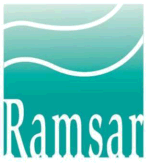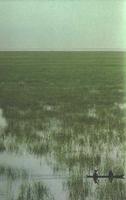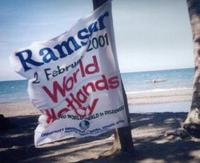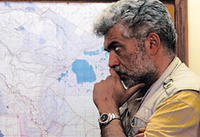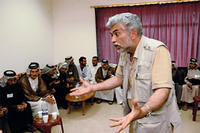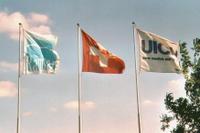

History of
Shipbuilding
and Craftsmanship
in Kuwait
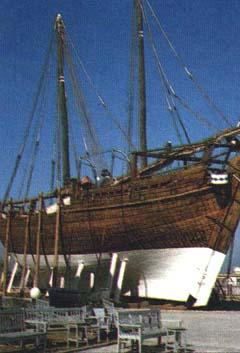
The European Travelers who visited Kuwait and the Arabian Peninsula praised the skills of the Kuwaitis and their superiority in shipbuilding. When the Danish traveler Carsten Niebuhr visited Kuwait
In 1765, he praised the maritime skills of the Kuwaitis who owned eight hundred ships and lived on commerce, fishing and pearl diving. .
After nearly one hundred years, in 1862,
William Palgrave confirmed what Niebuhr said before, by mentioning that the Kuwait harbor was considered the largest, since it attracts hundreds of ships. He praised the skills of the Kuwaitis and their courage. He also referred to the high position that they occupied among the sailors of the Gulf. Additionally, the British Political Agent in Kuwait, Dixon, referred to Kuwait’s maritime renown confirming that the best ships in the Gulf area were built in Kuwait. Eissa Al-Qattami also praised the Kuwaitis’ superiority in shipbuilding when he said that they mastered this craft due to their experience, until they became the most skilful shipbuilders. Their ships were known for their strength and their fitness for navigation.
 Types of Ships
Types of ShipsAmong the types of diving ships are: (Al-Batteel, Baqaara, Sanbouk, Boom, Jalboot and Shoui).
The largest submarine in Kuwait was the boom of the late Abdullah bin Nasser Bourseli, which was named Naif and built in 1921.
The largest sailboat made in Kuwait was a large boom named (Fateh Al-Khair). It was called the Big Dhow, built in 1914 by the late Abdullah bin Rashed for the late Hamad Abdullah Al-Saqr, one of the well known merchants and owner of large ships: traveling ships (maritime transport).
The largest modern ship was built in 1940 by the late Hajj Ahmad Salman Al-Ustadh for the late Ahmad Al-Ghanem, and was named (Mushref). It was larger than the Dhow, and had an engine beside the sail to move it. Fateh Al-Khair Sailing Boom The only Kuwaiti ship kept by the government was a large boom (called Al-Muhalab) built in 1936 for the late Thanian Al-Ghanem.
 Shipbuilders
Shipbuilders 1. Ship Caulking
Ship building in Kuwait was known as “Ship Caulking”, and to “Caulk” a ship is to pierce its boards with fibers, and to fill the openings with tar. The word “caulking” is derived from the word “Caulker” (Qalaf) -plural “Caulkers” (Qalaleef)-, which means the persons who build large ships and sailboats, and who undertakes the smoothing, caulking and preparation of wood.
This was considered a very difficult activity that necessitated that the workers spend the whole day, from sunrise to sunset, working under difficult conditions.
They also built various types of large and small ships, traveling ships (maritime transport), pearl diving ships and fishing ships. They also built modern ships and commercial yachts.
The Kuwaiti caulkers were among the most skilful and famous caulkers in the Gulf area. Due to their experience and exercise, they built large ships in a relatively short time, with the best style.
The chief caulker was called “Al-Ustadh” , and had a number of caulkers working with him.
The chief caulker of the ship (Al-Ustadh) had a number of workers joined the craft of ship caulking and worked under the leadership of a “Chief Caulker” or “Al-Ustadh”. He was responsible for directing the workers on account of his experience in shipbuilding.
He was like the Engineer Of The Ship as he designed it congenitally and through practice.
Besides building of ships, Al-Ustadh undertook the reparation of ships as well. He was also asked to accompany the ship during its long journeys as his presence made the crew of the ship feel secure against any dangers that might hit the ship.
This was the reason why the shipmasters (Nawakhedha) competed to accompany the well-known chief caulkers, in return for shares of nearly 250 rupees for the chief caulker.
There were a number of prominent Kuwaiti chief caulkers, not only in Kuwait, but in the whole Persian Gulf area as well.
A person called “Al-Mjaddemi” helped the chief of the ship (Al-Ustadh) in supervising the workers, and took his place if he was absent.
The Caulkers (“Qalaleef”), or the Ship Carpenters, on the other hand, were responsible for building the wooden boards of ships. While the Qalaleef performed their jobs, the nailers ("Al-Daraboun" or "Al-Darareeb") hammer the iron nails into the wood.
There was also “Al-Mazouri” who worked in carrying the wooden boards. In addition, a young boy called “Al-Waleed” was responsible for collecting “Al-Qashbar”, the small pieces of wood that were used as firewood in houses.
He also helped the workers by handing them their tools during work, and observed them to learn the craft.
Materials Used in Shipbuilding
1. Wood
Kuwaitis depended on building ships using different types of wood brought from India and East Africa. Teak was considered the most important kind of wood used for this purpose. This was due to its flexibility and outstanding durability. It was brought from Nagpur in India, and was used for building the walls, decks and ribs of the ship. Sometimes, “Al-Shalameen” or the ribs of the ship were made of a kind of wood called “Sobeit”, which was brought from Somalia. “Beess” or the base of the ship was made of a kind of wood called “Al-Jankari”, which was known for its solidity and strength and was brought from Nagpur.
2. Ship nails
Shipbuilding depended on the nails as well as wood. Blacksmiths in Kuwait made these nails. They were also brought from Abadan and India in different sizes and lengths according to the place in which they were to be placed. Their lengths also varied from one cubit or more, to the length of the normal nail.
3. Al-Fatail
They were cotton threads used to fill the gaps between wooden boards after being immersed in “Sull”, or fat. This was done to stick the wooden boards to each other and prevent the leakage of water inside the ship. These threads were brought from Dubai and India.
4. Al-Sull and Al-Shawna
Putting twines between the wood boards to prevent water from entering the shipFat (or “Al-Sull”) was extracted from fish. It was brought from Southern Arabian Peninsula and Nagpur in India. It was used to embrocate the wood of the ships after making them because it helped to make them more durable and long lasting. Al-Shawna, on the other hand, is a mixture of fat and lime. It was used to paint the lower part of the ship to resist the salinity of water. The lower part of the ship might be painted with copper so as to prevent the erosion of wood.
5. The texture used for making sails (Al-Ghazl)
Kuwaitis used to bring the texture from Bahrain, India and Karachi in the form of “Durriyat” or cloth whose length varied from forty to fifty meters. Then, they cut the cloth into rectangular pieces called “Al-Shuqaq”, which formed the sail according to its size and type.
6. The ship ropes
The ropes made of coir or palm fiber which were brought from Calcutta in the form of small or large bundles were necessary. Those ropes were tied in different ways, and defined according to their length, thickness, usage and kind. The thick rope was called “Al-Ammar” while the best kind of rope was called “Al-Sarkali”. There were other kinds of ropes as well, such as cotton ropes, alpi and hairless ropes.There were some kinds of rope that were tied to the mast and the sail of the ship.
For example, there were “leziar”, the rope tied to the mast, “Al-Ammareen”, the two ropes tied to the right and left sides in the middle of the mast, “Al-Baiaweer” in the front part of the mast and “Al-Khamari” at its top, which were used to strengthen the sail. Each of them had its particular usage.
Tools Used in Shipbuilding
The tools used in shipbuilding were very simple. It is also worth mentioning that the various kinds of ships that used to fill the Persian Gulf and the Indian Ocean no longer exist, despite their solidity and perfection. The most important tools used for building ships were:
Al-Manqar: ...a tool used for the boring and cleaning of wood.
Manqar Kalafat: ...an iron tool, which was divided at the end into two parts, used to insert threads between wooden logs in order to prevent the leakage of water into it.
Adze: ....a tool used for carving wood.
The Saw: ....a tool used for cutting wood, having teeth in different sizes, either large or small, each of which was used for a specific purpose.
Fastener: ....a tool used by the workers to hold pieces of wood together.
The knife: ....a tool used to hold pieces of wood together.
The hammer: ....a tool used to drive nails in the wood of the ships.
Al-Majdah: .....a tool used to bore wood by using the bow in order to facilitate the hammering of nails in it.
The bow: .....a rectangular cylindrical wood with a thin strip attached to its ends used to operate the “Al-Majdah” to bore wood of ships.
Al-Randa: .....(the plane), used for smoothing wood.
The cubit: ....a triangular, scaled metal piece, having a hole from which a thin rope hangs, at he end of which there was a small metal weight attached. This tool was used to measure the angle of inclination and the balance of the ship.
The thread: .....used to measure the length of the wooden pieces used to build the ship.
Al-Shaka: .....the piece of chalk used by Al-Ustadh to mark the pieces of wood used to build the ship.
Al-Maibar: .....a large needle used for sewing the sails of the ship.
Al-Bald: .....a block of lead having a hole in which a scaled rope is fastened, used to measure the depth of water.

 The Outer Body Of The Ship
The Outer Body Of The ShipIt was the base of the ship and its backbone; the principal part by which the shipbuilding begins, and from which all ribs extend.
Mil Sadr: the front part of the ship.
Mil Tafr: the back of the ship.
Al-Malek: the wooden board extending on the Bees.
Al-Khad: the wooden board extending beneath the Bees.
Al-Berimel: placed above the “mil” to keep the balance.
Caulkers Building a Ship
Al-Daouma:
placed on the front part of the Beess at “Mil Sadr” to protect it in case of collision.
Al-Kamar (the belt):
a thick wooden board placed around the middle of the ship in order to fasten it.
Al-Qubtan:
a wooden board placed above al-kamar (the belt) that surrounded the ship.
Al-Manzhara:
a wooden board placed between Al-Kamar (the belt) and Al-Qubtan.
Al-Terik:
the last wooden board in the body of the ship placed at the edge.
Al-Zebedra:
one of the boards of the ship placed at the sides of the tafr.
Al-Hejab:
the front part of the back of the ship.
Al-Aaliya:
the front part of the ship.
Al-Jeld:
the lower part of the front and the back of the ship.
Al-Qaem:
a vertical board at the back of the ship.
Al-Kalb:
a wooden rib at the front of the ship.
Al-Khesa and Al-Tearada:
protruding, wooden ribs at the back of the ship, used to fasten the flag, the sail ropes and the large and the small stake supporting Al-Farman.
Al-Satour:
a protruding piece of wood at the front of the ship.Al-Falki: a barrier for protection at the back of the ship.
 The Inner Parts Of The Ship And Its Deck
The Inner Parts Of The Ship And Its DeckSour Al-Daqal:
The points on which the large mast was based.
The masts:
a number of wooden pieces in different sizes that extended from the front to the back of the ship to support the deck boards.
Al-Mashaiat:
openings in which the masts of the ship were fixed, and were also used for loading different commodities.Al-Ubaidar: a fixed wooden reel used to raise the sail.
The deck boards:
wooden boards that constituted the deck of the ship.
Al-Fah:
the internal belt of the ship, which was placed in the middle.
The masts of Al-Neem and its boards:
the part at the back of the ship consisting of a storeroom to store victuals. It was called “Al-Dabbousa”.
Kashteel Sadr:
a place at the front of the ship to protect it from waves.
Hejab:
a wooden board placed at the front, above Kashteel Sadr, to prevent the leakage of water.
Jali:
a cover for the opening of the cargo deck “Al-Jamra”.
Shalman:
wooden ribs that support the outer boards of the ship.
Atfa:
curved, wooden ribs which took the form of the ship to support the wooden ribs.
Karwa:
wooden ribs which took the form of angles, fixed in the middle of the ship.
Hezam:
thick, rectangular wooden boards extending all over the ship to support it.
Fels:
the wooden base on which the mast was based.
Al-Ghoul:
wooden blocks supporting the fils, also serving as a support for carrying the bier.
Jalanka:
wooden ribs for supporting the body of the ship.
Aqrab:
wooden ribs that fastened the right and the left sides of the ship taking the form of the belt.
Al-Roqaa:
the back part of the ship.
Al-Maqar:
a small opening in the right side of the ship for draining water, and is closed by a piece of wood (Esjaja).
The helm:
used for changing the direction of the ship and reducing its speed.
Al-Kana:
a wooden rib vertically attached to the helm.
The flag stick:
the flagstaff on which the flag of the ship was raised.
The mast:
a long piece of wood stretched in the middle of the ship, on which the sail was fastened.
The ship had more than one mast:
a big mast (“al-daqal al-aud”) and a small one (“al-daqal al-qalami”).
Al-Abd:
a wooden rib to support the mast and fasten it using a rope (“leziar”).
Drinking water’s tanks:
large containers in which water was kept for the sailors to drink during their journeys or their work.
The anchor:
a heavy object dropped by a chain, cable or rope and cast overboard to the vessel in place.
Al-Sen:
one of the ship anchors, consisting of a rectangular piece of stone with a hole in its tip to which a short iron chain was attached. The base of the rectangular piece was also pierced so as to attach the iron piece of the anchor to it in order to hold the rocky seabed. Al-Karrab was attached with a long rope known as “Al-Kharab” to hold the ship in case it reached the depth.
Al-Bawra:
an iron tool having different shapes and weights, used as an anchor for the ship in the sandy and muddy seabed.
Al-Farman:
a rectangular piece of wood attached to the mast, curved at the middle as it touched the mast.
Al-Nabbash:
a thin rectangular piece of wood used for raising the big mast.
Al-Dustour:
a piece of wood placed between the middle of the ship and its mast, and acted as the base that supported the sail.
Al-Shafra:
the front rib of the sail.
Al-Shuqqa:
one piece of the sailcloth.
Al-Damen:
the rope of the sail, called “al-kar”.
Al-Darour:
the short ropes that fastened the upper part of the sail to the “Farman”.
Al-Joush:
the back part of the sail to which the bottom of “al-joush” was fastened.
Al-Mukh:
the rope placed inside the sail to support it.

